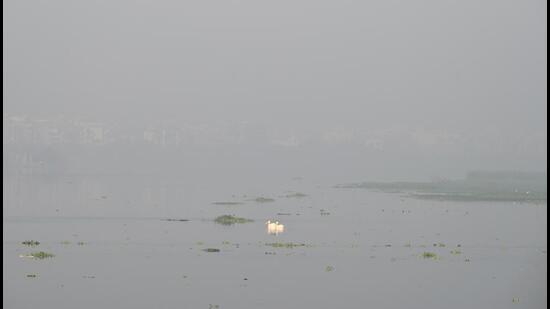DSS halts updates amid accuracy check
This is not the first setback in Delhi’s efforts to identify pollution sources. HT reported on November 21 that at least three key studies over the past four years were either halted or deemed ineffective.
The Decision Support System (DSS) – the sole source apportionment tool currently available to assess or estimate sources of pollution in Delhi – has ceased updates.

The reason: its performance is being evaluated by a Commission for Air Quality Management (CAQM) committee, which has asked the Indian Institute of Tropical Meteorology (IITM) — it runs this model – to make “certain changes” to improve accuracy and align the model with updated terms of reference.
The last data update on the DSS website spans November 26 to November 29, with no subsequent updates available.
A CAQM official, speaking on condition of anonymity, clarified that DSS is still in its development phase and has not been fully commissioned.
“An evaluation committee thus reviewed it and assessed that its data and accuracy was not in line with the terms of reference set for the model. It was also seen that some of the data or the emissions inventory being used was fairly old,” said the official, adding that a timeline for resuming updates remains uncertain.
The tool is also likely to upgrade its weather forecasting methodologies, the official cited above said, adding that a time frame on the resumption of DSS was difficult to ascertain at this point.
An IITM official confirmed the assessment, stating that “an expert committee is currently reviewing the tool”.
Experts said that with the last source apportionment tool also not sharing data any longer offers little transparency to the general public in terms of sources impacting Delhi’s air.
“By withholding data, DSS risks further eroding the already minimal transparency in identifying pollution sources. This lack of openness undermines accountability and hampers effective action against pollution. Decision-makers must leverage available data and tools like DSS, real-time source apportionment studies, and other systems to address pollution. Failing to do so wastes public resources, scientific efforts, and critical time needed to combat pollution effectively,” said Sunil Dahiya, lead analyst at the think-tank Envirocatalysts.
This is not the first setback in Delhi’s efforts to identify pollution sources. HT reported on November 21 that at least three key studies over the past four years were either halted or deemed ineffective.
In 2021, a real-time source apportionment study by Washington University, commissioned by the Delhi government, was abandoned due to “unsatisfactory results” before its findings were published. The project was later assigned to IIT Kanpur, but the two-year term ended in November 2022 without renewal.
DSS, which was the final source apportionment tool left, was running on an old 2021 emissions inventory.
Its website acknowledges the limitation: “The region and source-wise contributions are based on the emissions inventory formulated in 2021. For more accurate estimation of source contributions, updated emission fields are required.”
Experts flagged the importance of having advanced scientific systems and the tools to support air quality management in real-time.
Without updated data, policymakers and citizens are left in the dark about the shifting dynamics of Delhi’s pollution, even as the national capital grapples with recurring smog episodes and declining air quality.
“The DSS system and real-time source apportionment studies prioritised for Delhi are essential for transparent and informed decision-making, particularly during smog episodes,” said Anumita Roychowdhury, executive director of research and advocacy at the Centre for Science and Environment (CSE).
The most recent DSS update, from November 26 onwards, indicated that stubble burning contributed 5.84% to Delhi’s PM2.5 levels.
From November 27 to 29, the transport sector contributed an estimated 21-24.6% to PM2.5, while cross-boundary pollution sources such as Sonepat and Baghpat accounted for up to 9.96% and 6.51%, respectively.
The daily contribution has not been updated since then.
Stay updated with all top Cities including, Bengaluru, Delhi, Mumbai and more across India. Stay informed on the latest happenings in World News along with Delhi Election 2025 and Delhi Election Result 2025 Live, New Delhi Election Result Live, Kalkaji Election Result Live at Hindustan Times.
Stay updated with all top Cities including, Bengaluru, Delhi, Mumbai and more across India. Stay informed on the latest happenings in World News along with Delhi Election 2025 and Delhi Election Result 2025 Live, New Delhi Election Result Live, Kalkaji Election Result Live at Hindustan Times.





